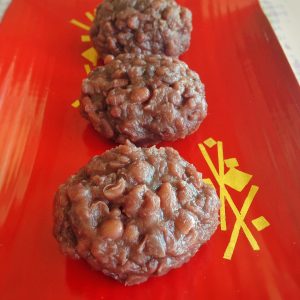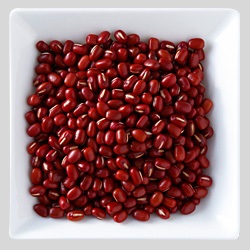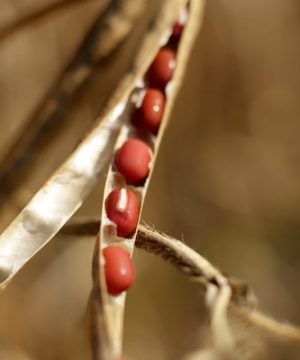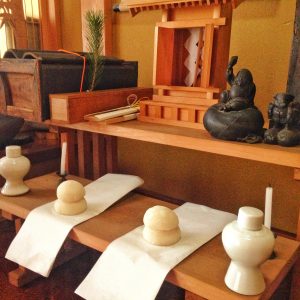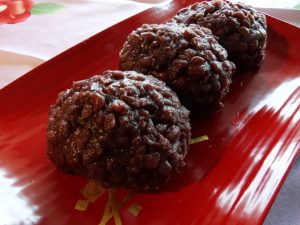
Botamochi and Ohagi are Japanese sweet made with rice and azuki (red beans paste). Japanese people enjoy this sweet in Higan(Buddhist holiday during the Spring and Autumnal equinox )
First they soak the rice for hours and then cook it. After that those rice is smashed into ball of rice to be wrapped around with read bean paste.
There are two different names, Botamochi and Ohagi. They are derived from the flower called Botan and Hagi , which blooms in the spring and autumn.
There are some riddles related to this sweet.
When you make Mochi, you have to pound rice into the rounded shape. However this sweet doesn’t require this traditional method. (The action of pounding is called “ tsuki “ which is the same pronunciation as arrival and moon). Since there is no “ pounding”, old people made a pun: “ no arrival “ or “ no moon”.
In this way, this sweet is called “ yobune (night ship) in summer, because there is no telling whether the ship arrived or not in the darkness at night. “ no arrival.”
And it is called “ kitamado “ (southern window) in autumn because you can not see moon from the window faced to south. “ no moon”
The definition of Botamochi and Ohagi is still ambitious and there are many theories about it.
One funny example is that they tell those sweets apart based on the shape of rice.
This is a little bit sinister story though, people call completely smashed rice “ minagoroshi(massacre) and not completely smashed rice “ hangoroshi” ( nearly killed). There is even a fable about it.
It has been said that the red color of azuki is good to ward off the devil.
Many years ago, people used to offer only red rice and azuki to God. This style was replaced by offering Ohagi and Botamochi , which use red bean paste as the sugar spread across this country.
